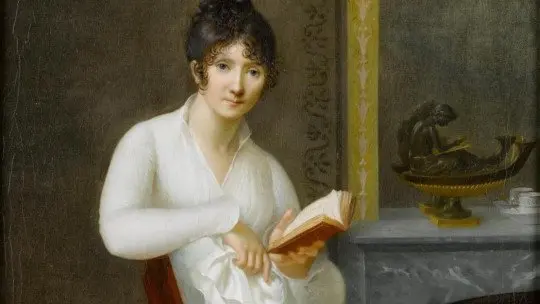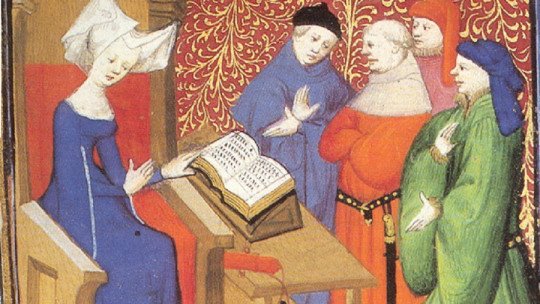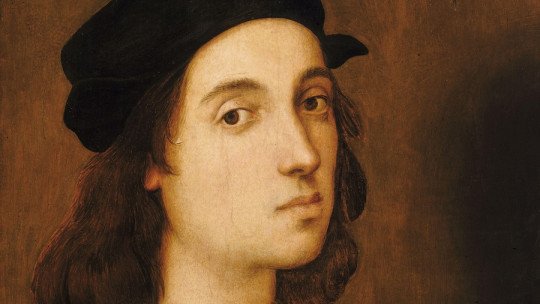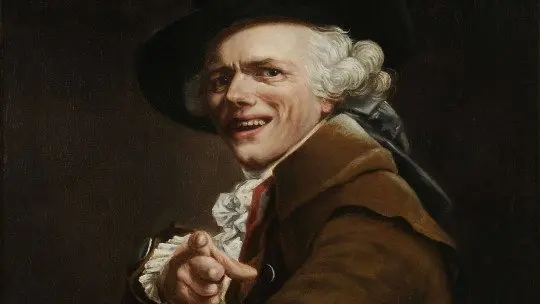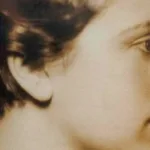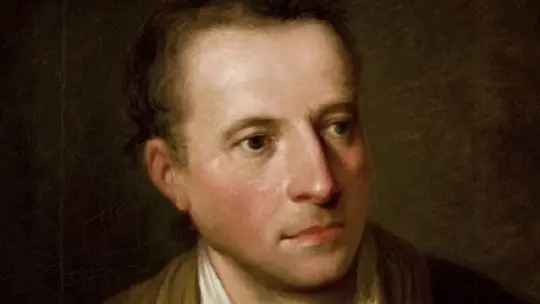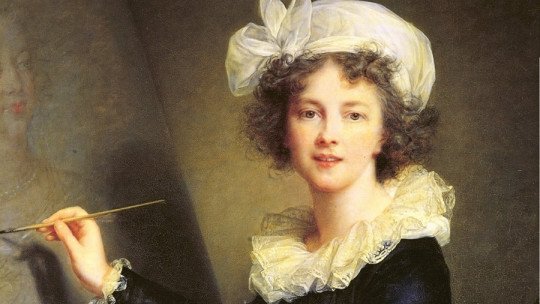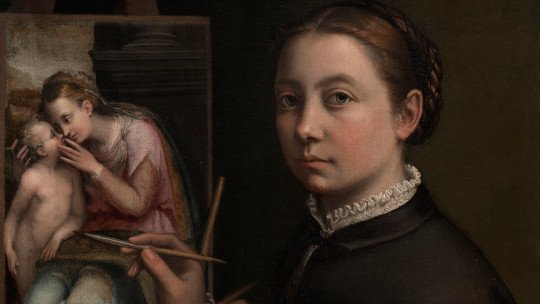
There is a well-known maxim, and that is that women were never recognized for their art.. This is only partly true, since this contempt is the result of quite recent centuries. From the 18th century onwards, female painters such as the extraordinary Sofonisba Anguissola (c. 1535-1625) fell into deep oblivion, to the point that some of her works (as happens with most female painters) were attributed to male companions. .
However, this was not always the case. The case of Sofonisba Anguissola is very clear in this sense: greatly appreciated in the artistic circles of her native Cremona, she was praised by Giorgio Vasari and recognized by Michelangelo himself, without forgetting that her paintings were enormously popular at the court of Philip II. .
Who is this painter whose memory is slowly beginning to recover? In today’s article we tell you about the life of one of the first women to achieve fame with her art: Sofonisba Anguissola.
Brief biography of Sofonisba Anguissola, Renaissance painter
When Anton van Dyck (1599-1641), the famous Baroque painter of Flemish origin, arrived in Palermo, he found an elderly Sofonisba, close to being a centenarian. At least, that’s what it says in a writing by the painter, which involves one of the sketches he made of the artist. There we can read that said sketch was made “from life”, in Palermo (where the painter lived at the time), and that she was ninety-six years old.
It is difficult to know if the age is correct, since the exact date of Sofonisba’s coming into the world is unknown. Experts calculate the years 1530-1535 as indicative, although there is no consensus on this matter. Perhaps the commemoration of the centenary of his birth, held in Palermo in 1632, will shed some light and we can thus establish 1532 as the correct year.. We do know the city in which he was born, Cremona, in present-day Italy, and to what family: his father was Amilcare Anguissola, and his mother, a lady named Bianca Ponzoni.
A humanistic education
Sofonisba was the eldest of six sisters, four of whom also dedicated themselves to painting. The father, Amilcare Anguissola, belonged to the lower nobility of the city. His family had always linked the names of the male children to the history of Carthage; He himself had received the Carthaginian name of Amilcare and, later, he would impose similar names on two of his children: Sophonisba herself and the only male child, who arrived last, Asdrubale..
Amilcare Anguissola was a humanist of his time and had read what Baldassare de Castiglione (1478-1529) stated in reference to the education of women. Thus, the six daughters of the Cremonese nobleman received an excellent humanist education, based on the classics, music and the arts. In fact, four of Sofonisba’s sisters also dedicated themselves to painting, although two of them abandoned the activity to get married, and a third, Elena, to enter a convent. The other, Lucia, died very young. On the other hand, the only one of the sisters who did not dedicate herself to painting was Minerva, who became a notable writer and Latinist.
Very aware of the extraordinary gifts of his eldest daughter, Amilcare placed her under the tutelage of the painter Bernardino Campi (1522-1591), who at that time was working for the cathedral of Cremona. Sofonisba is accompanied by her sister Elena, who will also train in the painter’s workshop.** These are the years of the young woman’s apprenticeship, where she takes from her teacher (and also from Bernardino Gatti, another of the artists who will instruct her) a style very close to Correggio, of which some of his first works** bear witness.
family portraits
Although Sofonisba cultivated other genres, he always stood out especially in portraiture. In these formative years he often painted his family, usually in intimate and everyday moments, as witnessed in the famous work The Game of Chess (1555). The background, exuberant and unreal (it would hardly be the landscape that the family saw from their house in Cremona) is reminiscent of the Flemish landscapes of the 16th century. In the foreground we see three of the sisters (probably Lucía, Minerva and Europa), who are entertaining themselves with the game of chess, while one of the maids, on the right side of the painting, watches them. The young women wear richly decorated outfits, a symbol of their status.
Bianca Ponzoni, the mother, wears a similar outfit in the portrait that Sofonisba made of her in 1557, shortly before the young woman’s departure to the Spanish court. The mother appears sitting in a majestic position, like a Roman matron, dressed in a luxurious dress and magnificent jewelry that, curiously, can be identified with those worn by the sisters in The Game of Chess.. Under the armrest of the chair where the lady rests we can read: Sophonisba Angussola Virgo F. 15.5.7, that is, “Sofonisba Anguissola, maiden, 1557”.
But probably the most notable portrait of Sofonisba’s youth is the one she made of her father, Amilcare, and her younger brother, Asdrubale, who on the canvas are accompanied by one of the sisters, probably Minerva, the future writer. The protective gesture of the father, who places his hand on his son, clearly indicates that he is the only and expected male of all his offspring. The canvas is unfinished, perhaps due to the artist’s departure to the Spanish court, which occurred the following year.
Praised by Michelangelo himself
Amilcare Anguissola knew the enormous talent of his eldest daughter and always tried to promote her in the humanistic circles of Cremona and the rest of the Italian peninsula. Among other things, he corresponded with Michelangelo himself, whom he asked to send him drawings so that his daughter could copy them and learn from them. It seems that the works that the proud father sent shortly after were to the taste of the Florentine genius, since Amilcare’s response letters are preserved, where he thanks Michelangelo for his kindness..
Although it is often said that Sofonisba met Michelangelo in Rome, there is no evidence that this contact took place, and it seems that the apprenticeship took place exclusively by letter. The famous sketch Boy Bitten by a Crab, showing Asdrubale, the younger brother, crying, is one of Sofonisba’s excellent drawings that Amilcare sent to Michelangelo.
The Spanish years
Little by little, Sofonisba’s fame begins to spread. The Duke of Alba, who had been governor of Milan and who had come into contact with the lady’s work, considered the possibility of the Cremonese becoming lady-in-waiting to the queen of Spain, Isabel de Valois. Thus, in 1559, and after some negotiations, Sofonisba left for the Spanish court as lady-in-waiting and drawing and painting teacher to the queen.
It is important to note that Sofonisba was not, as many maintain, the official painter of the court. Her role was to act as the queen’s lady, and her pictorial activity was relegated to a secondary level. In any case, her paintings were highly appreciated in the circles of Philip II, and there were many who hired her services so that the famous Italian could capture them on canvas.
In her Spanish years, Sofonisba came into contact with Alonso Sánchez Coello (1532-1588), from whom she absorbed the Spanish taste of portraiture and which she ended up magnificently fusing with the Italian style that she had learned in Cremona. The result was absolutely extraordinary works, among which are the portrait of Prince Charles, made shortly before his confinement in prison, which the prince greatly liked and for which the lady was richly compensated.. Also notable are the portraits of other members of the royal family, with whom Sofonisba became very close, such as Isabel de Valois holding a portrait of Philip II or the famous portrait of the king himself, long attributed to Sánchez Coello.
Marriage of convenience… and marriage for love
The death of Queen Isabel de Valois in 1568 left the painter very sad, since the relationship she had established with the sovereign had been very close. On the other hand, once her supporter disappeared, Sofonisba’s future at the Spanish court hung by a thread.
For a brief period of time the artist was the lady of the new queen, Anne of Austria, of whom she made a magnificent portrait that was destined to be the partner of the portrait of Philip II that we have already mentioned. However, in 1570 Sofonisba was almost forty years old and, according to her circle, she must marry urgently. The deceased queen had left in her last will a not insignificant amount of money to be used for her dowry, so Philip II decided to respect his late wife’s wish and looked for a husband for the painter.. The lucky one ends up being Fabrizio Moncada (1535-1579), a Sicilian nobleman. The couple married in Madrid in 1573, and later left for Paternò, Sicily, where Fabrizio had the family home.
Whether the marriage was successful, there is no way to know for sure. The groom was a cultured and educated character, so there were chances that he would get along well with his new wife. In any case, Sofonisba’s marriage did not last long. While sailing towards Spain, some pirates attacked the ship where Fabrizio was traveling, and he drowned. The case continues to be tinged with mystery, and not even now all the details of the event are known.
In any case, Sofonisba, now a widow, is forced to face the thorny and always overwhelming questions of inheritance. She is helped in this task by her brother Asdrubale, who accompanies her back to the family home in Cremona. What Sofonisba doesn’t know is that this trip back to her origins is going to change her life. During the journey, the painter makes friends with the captain of the ship that takes them to the Italian peninsula, Orazio Lomellino, several years younger than her. They both end up falling in love, and marry, with opposition from her family (and from King Philip II himself), in 1579..
The last years
The couple settles in Genoa, although they also travel sporadically to Palermo, Sicily, where Anton van Dyck visits them. Sofonisba did not stop painting once she was married, and was involved in the intellectual and artistic circles of Genoa at the end of the 16th century. During his Genoese period (the last of his life) he made a unique portrait of his former friend, Queen Isabel de Valois, based on some sketches that he still has.
Sofonisba Anguissola’s talent is undeniable. Also important is the fact that she was one of the first female artists to make her way through art, counting on her own abilities as a guarantee of success. She is, therefore, one of the great painters of all time who, fortunately (and along with many of her companions) little by little is beginning to be remembered as she deserves.

